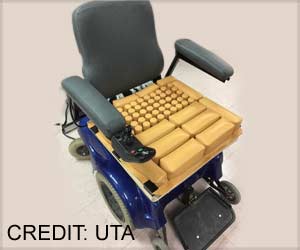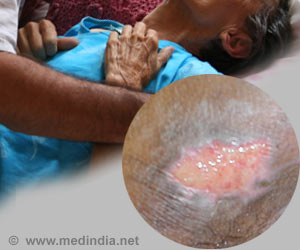- A new type of mattress called high-tech air mattress has been developed to prevent pressure ulcers
- It reduces the severity of pressure ulcers, duration of hospitalization, as well as the overall cost of patient care
- Although it is slightly superior to conventional specialist foam mattresses, it’s utility is low due to patient dissatisfaction
The cost of these high-end mattresses is around £1,000 or USD 1,217 each. In comparison, specialist foam mattresses cost only £200 or USD 243 each and are made of superior-quality polyurethane and viscoelastic foam, designed to reduce pressure on the patient’s skin.
While specialist foam mattresses are widely used in UK hospitals across the National Health Service (NHS), the high-tech air mattresses are present in only 10 percent of hospital beds under the NHS and are specifically reserved for patients at high risk of developing pressure ulcers.
Since there has been no study to evaluate the efficacy of these high-tech air mattresses, the National Institute for Health and Care Excellence (NICE), under the UK Government’s Department of Health, called for a scientific trial of these high-tech mattresses. This present study was conducted in response to the recommendation by NICE.
That study was led by Dr. Jane Nixon, PhD, MBE, who is a Professor of Tissue Viability and Clinical Trials Research and Deputy Director at the Institute of Clinical Trials Research, University of Leeds, UK. The study findings have been published in EClinicalMedicine, which is a constituent journal of The Lancet Group.
Read More..
Why are Pressure Ulcers Dangerous?
Pressure ulcers, also known as bed ulcers, are injuries to the skin and underlying tissues that arise due to prolonged pressure exerted on the skin. These usually occur in patients who are bedridden or immobile. The cumulative pressure build-up causes distortion of the tissues, as a result of which the blood supply to the affected area may be cut-off. This kills the tissues due to reduced oxygenation, leading to the development of painful ulcers.Pressure ulcers are graded on the basis of severity, which ranges between 1 and 4. Grade 1 is the least severe, while Grade 4 is the most severe. In very severe cases, bacterial infections can lead to the development of gangrene, which requires emergency medical care, as otherwise amputation may be required. Hence, pressure ulcers can have dangerous consequences.
The NHS in the UK considers pressure ulcers to be a ‘concerning and avoidable harm.’ Importantly, 2018 data indicate that treatment of pressure ulcers costs the NHS a staggering £3.8 million every day!
Key Features of the Study
- World’s first large-scale study to compare the efficacy of high-tech air mattresses vs specialist foam mattresses for preventing pressure ulcers
- The study recruited 2,000 patients at high risk of developing pressure ulcers
- Patients were mainly from hospitals and community units run by the NHS, UK
- The majority of the patients were elderly (median age: 81 years), with some aged over 100 years
- The patients were randomly allocated to either a high-tech air mattress group or specialist foam mattress group
- The study period was 2 months or until the time of discharge, whichever was earlier
- The patients were followed-up for 1 month after the end of the study
She adds: “But in practice, some nurses provide high-risk patients as well as those with existing pressure ulcers with the high-tech air mattresses and there has not been any evaluation of the effectiveness of one type of mattress over another.”
Key Findings of the Study
- High-tech air mattresses were marginally better than specialist foam mattresses
- Out of 50 patients allocated to high-tech air mattresses, only one patient benefitted
- 6.9 percent of patients on high-tech air mattresses developed Grade 2 pressure ulcers (blister or broken skin)
- 8.9 percent of patients on specialist foam mattresses developed Grade 2 pressure ulcers
- Median length of time taken for ulcer development was 18 days in patients using high-tech air mattresses
- Median length of time taken for ulcer development was 12 days in patients using specialist foam mattresses
- Total number of patients who developed pressure ulcers during the study period was lower than expected, possibly arising from improvements in nursing practice
Benefits of High-Tech Air Mattresses
High-tech air mattresses are beneficial for patients who are completely bedridden, confused, have nutritional deficiencies and deep red skin coloration at the pressure point. There are also economic benefits of using high-tech air mattresses. Although they are costly to buy, they are capable of slightly decreasing the time of hospitalization, thereby reducing the overall cost incurred for patient care. However, there is a need for further research to evaluate how the mattress type is correlated with the duration of hospital stay.Drawbacks of High-Tech Air Mattresses
Some of the drawbacks of high-tech air mattresses arise from patient dissatisfaction. Many patients find these mattresses to be uncomfortable, unsafe (due to movement), and noisy (due to the pump), which makes it difficult for them to fall asleep. Moreover, patients undergoing rehabilitation often complain that they’re unable to move about by themselves or get in and out of bed without assistance, thereby exacerbating their already existing limited mobility.Concluding Remarks
The research team indicates that although there are some benefits of high-tech air mattresses, they advise nurses to use specialist foam mattresses for most patients.Nixon concludes: “The outcome of this study provides the evidence that specialist foam mattresses are appropriate for most patients who are at high risk of developing pressure ulcers.”
She adds: “But staff should be free to exercise clinical discretion in provision of either mattress, informed by patient preference, comfort or rehabilitation needs as well as specific risk factors such as being completely immobile, being confused, having nutritional deficits or early signs of pressure damage.”
Funding Source
The study was funded by the UK National Institute for Health Research (NIHR) Health Technology Assessment Program. Additional support was provided by the Pressure Ulcer Research Service User Network (PURSUN UK), which is located in the Clinical Trials Research Unit (CTRU) at the University of Leeds, UK.Reference:
- Pressure Relieving Support Surfaces for Pressure Ulcer Prevention (PRESSURE 2): Clinical and Health Economic Results of a Randomized Controlled Trial - (https://doi.org/10.1016/j.eclinm.2019.07.018)
Source-Medindia










